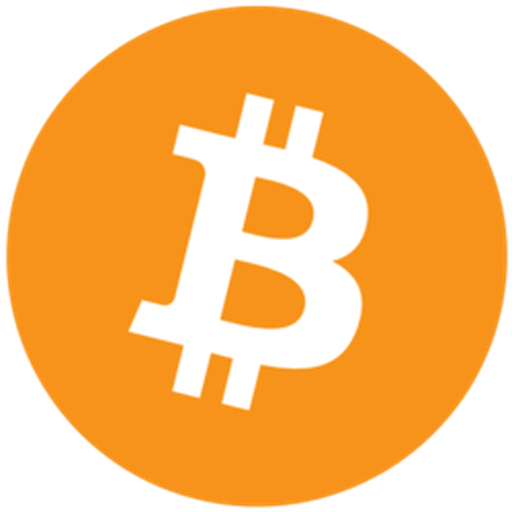Bitcoin vs Staked Frax Ether – Price, Market Cap & Performance Compared
Which coin performs better – Bitcoin or Staked Frax Ether?
We compare the current price (113 413 $ vs 4 705.22 $), market cap (2 259 897 570 352 vs 327 843 746) and all-time high (124 128 vs 7 545.09).
Find out which one stands out right now!
Bitcoin is currently trading at 113 413 $, while Staked Frax Ether stands at 4 705.22 $. These cryptocurrencies differ not only in price but also in market presence.
The market cap of Bitcoin is around 2 259 897 570 352, and Staked Frax Ether has about 327 843 746. Their respective all-time highs are 124 128 for Bitcoin and 7 545.09 for Staked Frax Ether.
Daily trading volume and the 24h price change (1.3122 % vs -0.04846 %) also offer key insights.
Compare all metrics now and see which coin fits your investment strategy best!
Bitcoin
Bitcoin stands as the pioneering cryptocurrency that introduced the world to the concept of decentralized digital currencies. It operates on a peer-to-peer network that allows users to exchange value without the need for intermediaries like banks or financial institutions. As a decentralized form of currency, Bitcoin has sparked a global conversation about the future of money and has paved the way for the development of thousands of other cryptocurrencies.
more informationStaked Frax Ether
Staked Frax Ether represents a novel approach within the DeFi ecosystem by offering a decentralized, self-regulating stable asset backed by Ether. This coin enables holders to seamlessly earn staking rewards while maintaining liquidity, which is crucial for active participation in various markets. The integration of Staked Frax Ether into portfolios provides a unique blend of stability and growth potential, appealing to both risk-averse and growth-seeking investors.
more information

|

|
|
|
|
General Information |
|
|---|---|
|
Title
Bitcoin
|
Title
Staked Frax Ether
|
|
Symbol
btc
|
Symbol
sfrxeth
|
|
Whitepaper
|
Whitepaper
-
|
|
Website
|
Website
|
|
Community
|
Community
-
|
|
Last Updated
2025-09-24 23:29
|
Last Updated
2025-09-24 23:28
|
Price Data |
|
|---|---|
|
Current Price $
113 413 $
|
Current Price $
4 705.22 $
|
|
High 24h
113 941 $
|
High 24h
4 757.68 $
|
|
Low 24h
111 369 $
|
Low 24h
4 680.48 $
|
|
Price Change 24h
1 468.93 $
|
Price Change 24h
-2.28138 $
|
|
Price Change % 24h
1.3122 %
|
Price Change % 24h
-0.04846 %
|
Market Data |
|
|---|---|
|
Market Cap
2 259 897 570 352
|
Market Cap
327 843 746
|
|
Total Volume
46 418 216 381
|
Total Volume
104 718
|
|
Market Cap Change 24h
29 438 330 305
|
Market Cap Change 24h
-329 606
|
|
Market Cap Change % 24h
1.31983 %
|
Market Cap Change % 24h
-0.10044 %
|
|
Return on Investment (ROI)
-
|
Return on Investment (ROI)
-
|
Supply and Availability |
|
|---|---|
|
Circulating Supply
19 925 728
|
Circulating Supply
69 657
|
|
Total Supply
19 925 728
|
Total Supply
69 657
|
|
Max Supply
21 000 000
|
Max Supply
-
|
Historical Data |
|
|---|---|
|
All Time High (ATH)
124 128
|
All Time High (ATH)
7 545.09
|
|
ATH Change %
-8.71521 %
|
ATH Change %
-37.61939 %
|
|
ATH Date
2025-08-14 00:37
|
ATH Date
2023-02-16 07:51
|
|
All Time Low (ATL)
67.81
|
All Time Low (ATL)
1 147.58
|
|
ATL Change %
167 002 %
|
ATL Change %
310.1377 %
|
|
ATL Date
2013-07-06 00:00
|
ATL Date
2022-12-23 11:50
|
Bitcoin
An Ageless Pioneer: Bitcoin
Bitcoin, symbolized as BTC, often referred to as the "digital gold," stands as a robust innovation in the world of cryptocurrencies. Since its inception, Bitcoin has served as a cornerstone in the rapidly evolving blockchain ecosystem. Let's explore the foundation it has built, the challenges it faces, and the potential it holds for the future.
The Advantages of Bitcoin
Bitcoin’s primary advantage lies in its decentralized nature. Unlike traditional currencies, Bitcoin is not governed by any central authority, providing a sense of autonomy and financial freedom to its users. Transactions are conducted on a peer-to-peer network, reducing transaction times and associated fees, especially for international payments. Furthermore, Bitcoin provides a level of transparency and security through a public ledger known as the blockchain, ensuring each transaction is secure and immutable.
Bitcoin has been praised for being a hedge against inflation. As a deflationary currency with a capped supply of 21 million coins, it becomes a valuable asset in times when traditional currencies face devaluation.
The Disadvantages of Bitcoin
Despite its numerous advantages, Bitcoin is not without its challenges. The most significant being its price volatility, which can deter those with lower risk tolerance. This volatility can be attributed to several factors including market speculation, regulatory news, and macroeconomic trends.
Additionally, Bitcoin’s scalability is a concern. The network can only process a limited number of transactions per second, leading to higher fees and slower transaction times during peak usage. Also, although pseudonymous, Bitcoin transactions can be tracked on the blockchain, which might concern users seeking greater privacy.
Development History
Since its launch in 2009 by the pseudonymous Satoshi Nakamoto, Bitcoin has undergone significant changes and growth. Initially met with skepticism, its adoption has surged over the years, leading to increased investment from individuals and institutions alike. Bitcoin’s evolution is marked by several key moments, such as the introduction of the Lightning Network to enhance scalability, and the increased interest in Bitcoin as a legitimate investment vehicle.
Future Prospects of Bitcoin
Looking ahead, Bitcoin holds immense potential as a mainstream currency and a digital store of value. As technologies improve, scalability and energy efficiency may no longer remain bottlenecks. Bitcoin could see widespread adoption as it integrates with existing financial systems and garners regulatory clarity.
Furthermore, the future of Bitcoin could be shaped by its role in the development of decentralized finance (DeFi) platforms and as the base currency against which other cryptocurrencies are valued.
Conclusion
Bitcoin remains a pioneering force in the cryptocurrency world. Despite facing challenges, its strengths and continuous innovations keep it firmly positioned at the forefront of digital currencies. Whether its role as a financial disruptor or as a digital asset, Bitcoin's journey continues to captivate and inspire the evolution of global finance.
Staked Frax Ether
Introduction to Staked Frax Ether
Staked Frax Ether (sfrxETH) is a unique cryptocurrency that has garnered attention within the crypto community due to its innovative mechanism and pegging system. As a staked version of Frax's Ether, it operates by locking up Ether to provide liquidity and earn rewards, acting as a bridge between traditional Ether and its yield-bearing counterpart.
Historical Performance of Staked Frax Ether
Since its inception, Staked Frax Ether has shown notable fluctuations, reflecting the dynamic nature of the cryptocurrency market. Reaching an all-time high (ATH) of $7545.09 in February 2023, sfrxETH demonstrated its potential to yield substantial returns for early investors. However, like many cryptocurrencies, it also experienced significant downward trends, registering an all-time low (ATL) of $1147.58 in December 2022, illustrating the volatile landscape of the crypto market.
Advantages of Investing in Staked Frax Ether
One of the primary advantages of sfrxETH is its ability to offer staking rewards which are compounded over time, providing a continuous source of additional profits for holders. This characteristic potentially enhances the overall investment yield compared to holding traditional Ether. Furthermore, as it is closely linked to the Frax ecosystem, sfrxETH benefits from the stability and innovation brought by this decentralized finance (DeFi) platform, giving it a sturdy foundation in the crypto space.
Potential Drawbacks of Staked Frax Ether
Despite its promising structure, investing in sfrxETH comes with risks inherent to all cryptocurrency investments. The market's volatility and the coin's significant price shifts may pose risks to short-term investors. Furthermore, since it is part of the growing DeFi ecosystem, it is also susceptible to regulatory changes that may impact its future performance. Investors should be acutely aware of these dynamics and perform comprehensive research before diving into sfrxETH.
Current Market Analysis
As of the latest data, Staked Frax Ether is priced at $2805.38, with a market cap of $327,047,674 and total volume at $1,793,065. These figures suggest a steady presence in the market, albeit with recent declines in market cap and value indicating the current bearish sentiment. With 116,578.89266275 sfrxETH in circulation, its supply is tightly managed, ensuring value retention and potential for growth.
Future Prospects for Staked Frax Ether
Looking ahead, the future of Staked Frax Ether will likely be shaped by broader trends in the DeFi space and increased adoption of staking mechanisms. As more investors seek passive income through staking, sfrxETH could see increased interest and demand. Moreover, any advancements in the Frax ecosystem could bolster its standing in the market. However, economic factors and evolving regulations remain crucial variables that will influence its trajectory.
Conclusion
Staked Frax Ether represents a compelling financial instrument for those looking to leverage staking to enhance their cryptocurrency portfolio. With its innovative approach backed by the Frax ecosystem, it holds promise but also requires mindful consideration of its risks. As the cryptocurrency arena continues to evolve, sfrxETH is a noteworthy player that holds the potential to become more integrated into the DeFi landscape.

